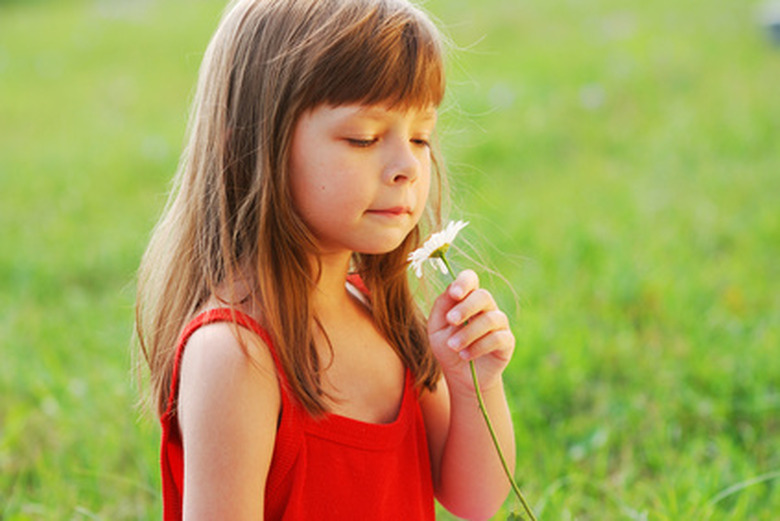Plant Identification For Children
Whether you have an 18-month-old struggling how to say "flower" or a 9-year-old who's fascinated by terrariums, resources are available to teach children how to identify plants. Children learn huge amounts of information by observing the natural world, so it makes sense to give them the tools to answer some of their "What's that?" questions themselves. Learning about how plants work, how they acquire their names and what they do for humans and animals gives children a sense of safety outdoors and respect for the natural world.
Whether you have an 18-month-old struggling how to say "flower" or a 9-year-old who's fascinated by terrariums, resources are available to teach children how to identify plants. Children learn huge amounts of information by observing the natural world, so it makes sense to give them the tools to answer some of their "What's that?" questions themselves. Learning about how plants work, how they acquire their names and what they do for humans and animals gives children a sense of safety outdoors and respect for the natural world.
Children under 4
Flowers and other plants provide many language opportunities for even very young children. Some of the words form the beginnings of a plant vocabulary: flower, stem, leaf. Plants can also provide vivid and memorable experiences of other important concepts: colors, size, shape and texture. With supervision, concepts of care, especially watering, can be taught.
- Whether you have an 18-month-old struggling how to say "flower" or a 9-year-old who's fascinated by terrariums, resources are available to teach children how to identify plants.
- Learning about how plants work, how they acquire their names and what they do for humans and animals gives children a sense of safety outdoors and respect for the natural world.
Pre-K and Kindergarten Children
Children ages 4 to 6 can learn the names of plant parts and some information about how the parts work. The idea, for example, that trees "eat with their feet," drawing water and minerals up through their roots is particularly entertaining if children get to drink juice through a straw. Nature walks for this age group are vehicles for gathering fall leaves and identifying by shape.
Kindergarten through Third Grade
Children are capable of considerable classification of plants in these grades, as observation skills and vocabularies grow exponentially. The basics, sorting out trees from bulbs from flowers or vegetables, come easily to children in this period of rapid learning. How plants "work" is a subject of considerable fascination. Charting an apple tree from dormancy to full leaf and budding fruit lets children draw, narrate and observe growth over a period of weeks. If possible, start a garden.
- Children ages 4 to 6 can learn the names of plant parts and some information about how the parts work.
- Nature walks for this age group are vehicles for gathering fall leaves and identifying by shape.
Fourth to Sixth Grades
During this period, children can enhance their vocabularies of plant parts and their functions. Simple growing experiences like planting bean seeds can be adapted to more experimental studies; children possess skills to describe what happens to plants receiving restricted or enhanced light or water. This is also a time for children to begin learning about plants in their environments: what plants do for a pond, how a forest canopy is layered and how plants can prevent erosion. Both photosynthesis and oxygen/carbon-dioxide exchange can be explained in general terms.
Sixth Grade and Up
One way to engage older children in nature is to let them teach. Growing seedlings to plant at a local senior center garden, constructing a planting project to carry out with kindergartners or helping to lay out a school vegetable garden all present children with plant identification and use issues to work out. Slowly, teens become authorities by building on previous knowledge so they can apply it.
- During this period, children can enhance their vocabularies of plant parts and their functions.
- Simple growing experiences like planting bean seeds can be adapted to more experimental studies; children possess skills to describe what happens to plants receiving restricted or enhanced light or water.
Resources
Print material for children at varied ages is readily available online. Many county extension sites provide children's material. Much of nature, however, needs to be hands-on as well if experiences are to have lasting value. Start a windowsill garden, raid a local produce stand or make friends with an overstocked florist.
